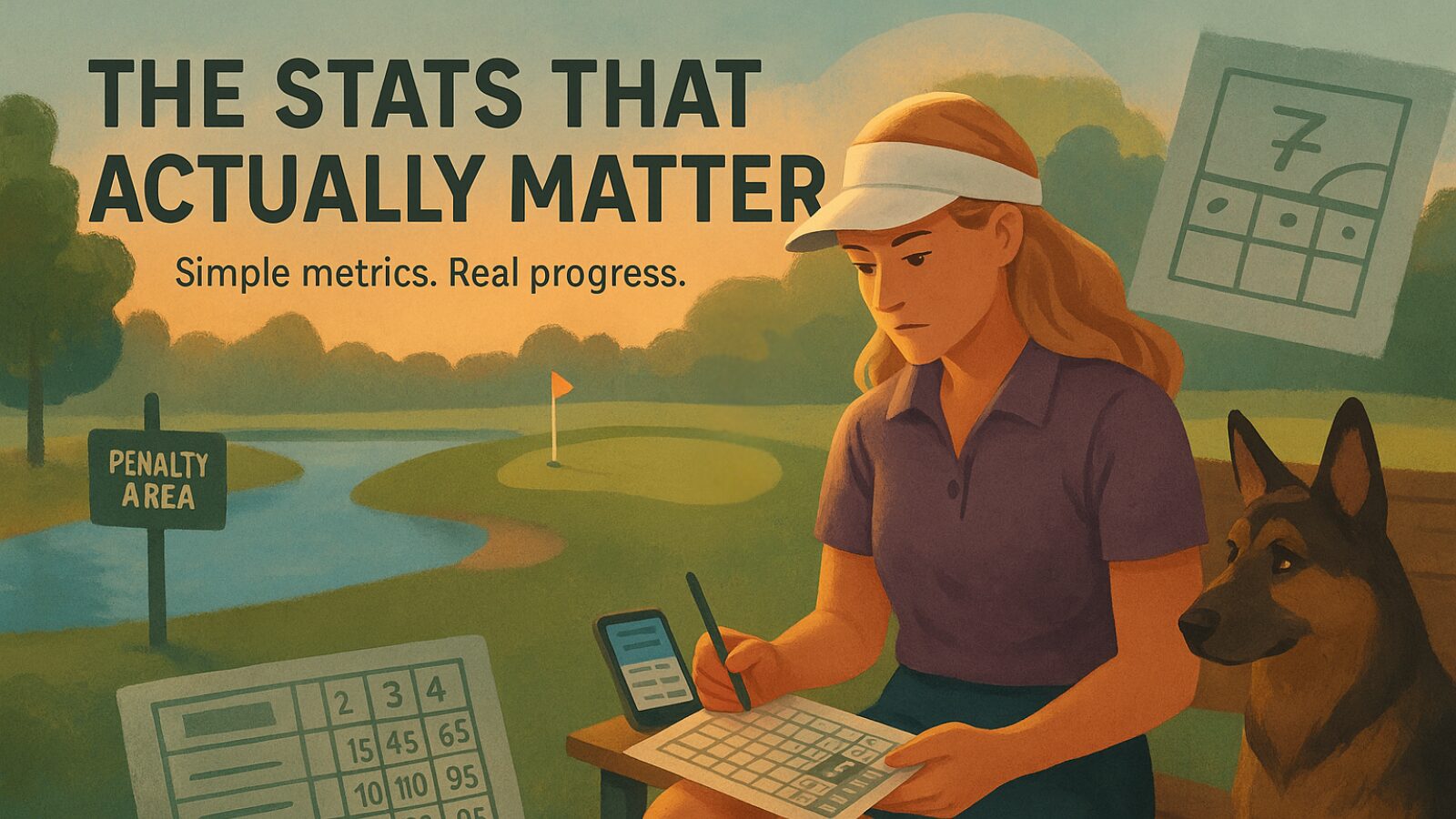Spoiler alert: Most of them don’t. But there is a lot of useful and actionable information available if you starting tracking beginner’s golf stats — which has led to quicker improvement and lower scores that I had even hoped for.
When I Downloaded 18Birdies Premium, I Felt Like I Was Drowning
Three weeks into my golf comeback, I made the bold, possibly foolish, decision to upgrade to 18Birdies Premium. I wanted data. I wanted improvement. What I got? Charts. Graphs. Heat maps. Shot tracking overlays that looked like I was trying to hack into the Pentagon. I was tracking 24 stats per round and had no idea what any of it meant.
Did I suddenly know how to break 100? Nope. I just knew I missed 13 greens and my dispersion circle was ugly.
So I did what any overachieving, time-strapped, improvement-hungry golfer would do: I created my own filter. One that cut through the noise and kept only what moved the needle. These four statistics capture what actually matters if you’re trying to get better fast.
And here’s the good news: you can drop the paralysis and still make real, measurable progress. I went from a 26.0 to a 20.9 handicap in my first eight weeks back. Not from swing changes or chasing driver distance, but from using stats to think smarter, not work harder.
I came back to golf with the kind of brain that notices patterns. In my work, I spend a lot of time with data — not just to track things, but to figure out what actually matters. What’s moving a program forward. What’s helping people grow. I think of it less as being “data-driven” and more as “data-informed, values-led.”
So it makes sense that once I started logging rounds again, I wanted a way to make sense of all the numbers. Not because I’m obsessed with stats, but because I like knowing what to work on. What to ignore. What to do next.
I’m not a golf pro. But over the past few months, I’ve become a decent caddy — for myself, and sometimes for the people I play with. I love talking strategy mid-round, swapping ideas, asking, “What club are you most comfortable with — will that get you in scoring position?” or “You might be better off punching out for a clean shot.” It’s not about being right — it’s about thinking things through together.
That’s the spirit behind this post. I play with a lot of folks who want to improve but aren’t sure what to focus on. Honestly, I’m still figuring that out too. I’m in the middle of it. But learning to track a few key stats — just the ones that actually connect to score — has helped me feel less lost and more in control. Not perfect. Not automatic. Just clearer.
Let’s dive in.
Why Most Golf Stats Are Useless for Beginners
It’s not that the data is wrong. It’s just that most of it doesn’t help you right now. Strokes gained analysis? Love it — for tour pros. Sand save percentage? Great — if you’re actually in bunkers more than once a round. Average proximity to hole? Cool, but if your second shot ends up under a pine tree, does it really matter that it started 127 yards out?
The other issue? Most of those “advanced” stats only start to mean something once you’ve played a lot of rounds. If you’re logging one or two 9-hole rounds a week, you’re just not generating enough volume for meaningful trends. The sample size is too small — and too noisy.
But you do have a ton of data for things that happen on every single hole: tee shots, approach shots, putts, and decisions that lead to penalties. Those are the stats that show patterns quickly — and the ones most likely to offer clear next steps.
Mark Broadie’s analysis of 40,000+ golf shots (Broadie, 2008) formed the foundation for his strokes gained methodology, which later expanded to analyze millions of professional shots through PGA Tour ShotLink data. While modern analytics has moved beyond traditional statistics, these four core categories remain the most accessible starting point for recreational golfers.
Michigan Reality Check: With only 16–20 weeks of prime golf weather, every round matters. I can’t afford to waste shots on hero attempts that work 2 out of 10 times.
Reality check: you don’t need to be good at everything. You just need to stop bleeding strokes in the same places over and over again.
The Core Four Metrics That Actually Matter
1. Fairways Hit
Why It Matters:
If you can’t play your second shot, you can’t score. Period.
At the end of June, I played Salem Hills and hit 9 out of 14 fairways — a personal best. I also posted my lowest score of the year. Coincidence? Not even a little bit.
Research on external focus shows that focusing on golf skill outcomes (like ball flight and target) is more effective than obsessing over swing mechanics. Translation: your brain already knows more than you think. You don’t need a launch monitor to know your typical miss — just your last few rounds.
What you do need is a plan. You need to know what’s most likely to happen if you mishit — and what’s likely if you don’t. Then choose an aim point that gives you a decent result either way. Not perfect if you’re flushed. But playable if you’re not.
Because at this level, it’s not about hitting hero lines — it’s about managing your average. And quite frankly, that’s what tour pros do too. I love those little dispersion charts that show where players’ tee shots landed — and what impact that had on their score. They’re not aiming at the pin. They’re aiming at the best odds.
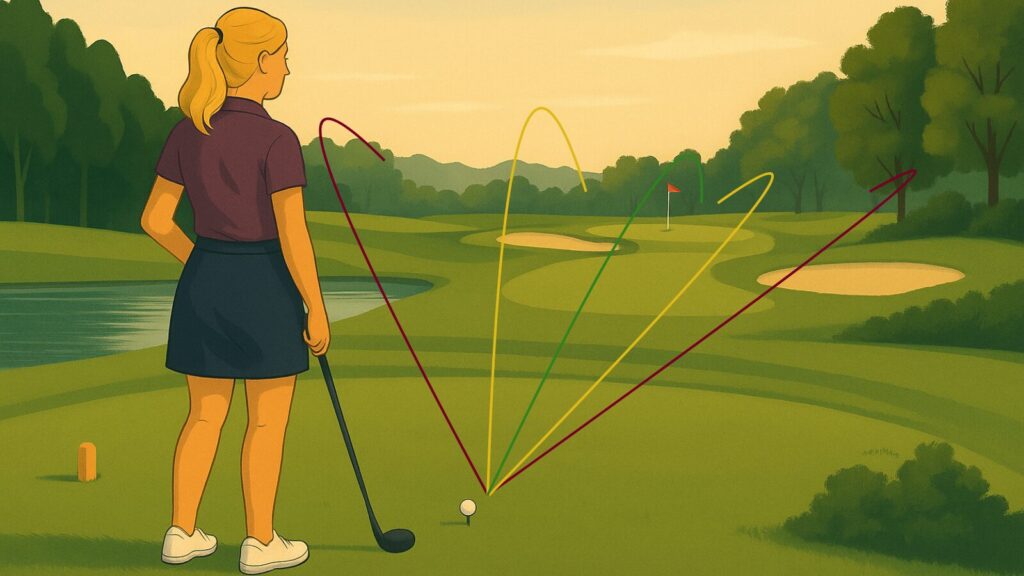
How I Track It:
- 18Birdies fairway tracking setup (include first cut as “fairway”)
- Par 3 rule: green hit = fairway hit
- Weekly course-by-course breakdowns
- Review spray pattern and trends post-round
Improvement Targets:
🎯 FAIRWAYS HIT PROGRESS
├─ Starting Point: 40.2% (April)
├─ Current: 45.2% (June)
├─ Consistency Goal: 40% (8+ per round)
└─ Breakthrough Goal: 42% (8+ per round)
2. Greens in Regulation (GIR)
Why It Matters:
Every additional GIR saves about 1.5 strokes per round. It’s the strongest single indicator of scoring.
When I played The Cardinal course at St. John’s in late June, I hit six greens and shot a 41 over nine holes — my cleanest round up to that point. It was part of a group lesson with a former pro acting as a caddy. He helped with aim points, club choices, and strategy. I made the shots. And I wasn’t scrambling — I was putting for par.
I’m ruthless about counting GIRs accurately. Fringe doesn’t count. Near misses don’t count. But if I’m 20–30 yards out in short grass with no trouble? That’s a tactical win. That’s bogey golf.
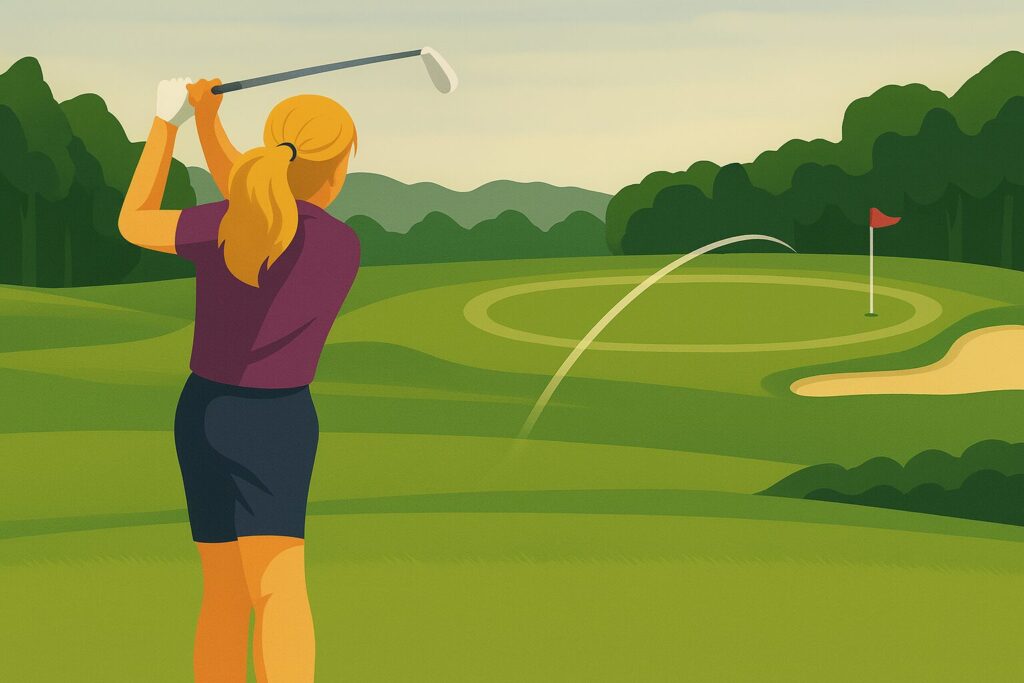
How I Track It:
- Standard GIR definition
- Quality of misses (safe vs. short-sided)
- % tracked in 18Birdies
Improvement Targets:
🎯 GREENS IN REGULATION PROGRESS
├─ Starting Point: 18.5% (April)
├─ Current: 20.4% (June)
├─ Consistency Goal: 15% (3+ per round)
└─ Breakthrough Goal: 23% (4+ per round)
3. Putts Per Hole
Why It Matters:
You’ve heard it before: drive for show, putt for dough. My grandfather used to say that all the time — usually after my sister bombed a drive and I cleaned up with a steady two-putt. “She drives for show,” he’d grin, “but you putt for dough.”
He taught me how to putt — with patience, feel, and a little humor. I think of him often on the greens.
But here’s the nuance: I don’t obsess over total putts. I obsess over 3-putts and distance control.
At UM Golf Course last week, I was on in one on a par four. Lagged it from 80 feet to 20. Then spiraled into a five-putt. My playing partners were kind, but it still sucked. That kind of mental derailment is what I’m trying to eliminate.
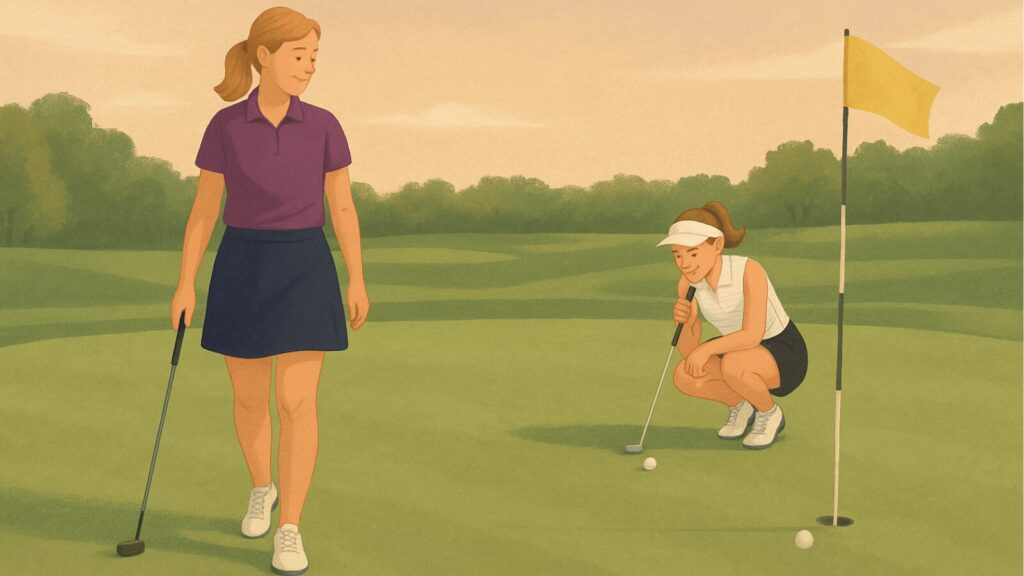
How I Track It:
- Average putts per hole
- 3-putt frequency
- Distance tracking and post-round notes
Improvement Targets:
⛳ PUTTING PROGRESS
├─ Starting Point: 2.4 (April)
├─ Current: 2.2 (June)
├─ Consistency Goal: 33 per round (1.8 per hole)
└─ Breakthrough Goal: 32 per round (1.8 per hole)
Personal breakthrough:
My 20-minute nightly putting routine dropped my average from 21 to 19. My niece recently watched me play and said, “You might not make the long ones, but you’re always close enough to make the second.” Brutal. And fair.
4. Penalty Strokes Per Round
Why It Matters:
This one hurts. I used to average 3.8 penalties per 9 holes — that’s 7.6 free strokes I was donating to the golf gods before I even reached the green. I once racked up a remarkable 8 penalties in 9 holes at the University of Michigan course. That round still lives in infamy.
Part of my turning point came from paying closer attention — not just to my shots, but to what my playing partners knew. Beth and Joyce in particular have been incredibly generous with their course knowledge. I’ve always been scared of slicing right with my driver, but on Hole 2 at UM, they warned me about the blind wetlands hazard over the hill on the left side — something I never would’ve seen. The fairway slopes that direction, and if you land anywhere in the middle, it can kick hard left into the hazard. But aiming right isn’t a free pass either — far right is tall grass and a known Titleist graveyard.
So now I play it differently. I don’t aim for the middle. I aim for the high side of the slope and club down to something I know I can keep in play — even if it leaves me with a longer second shot. My goal is just to keep the ball on grass and give myself a chance to swing again. And when I do that? No penalties. No hero shots. Just golf I can keep playing. Last week, I played that hole exactly that way — and walked off with a bogey. Almost saved par, too, but had to settle for a six-inch tap-in.
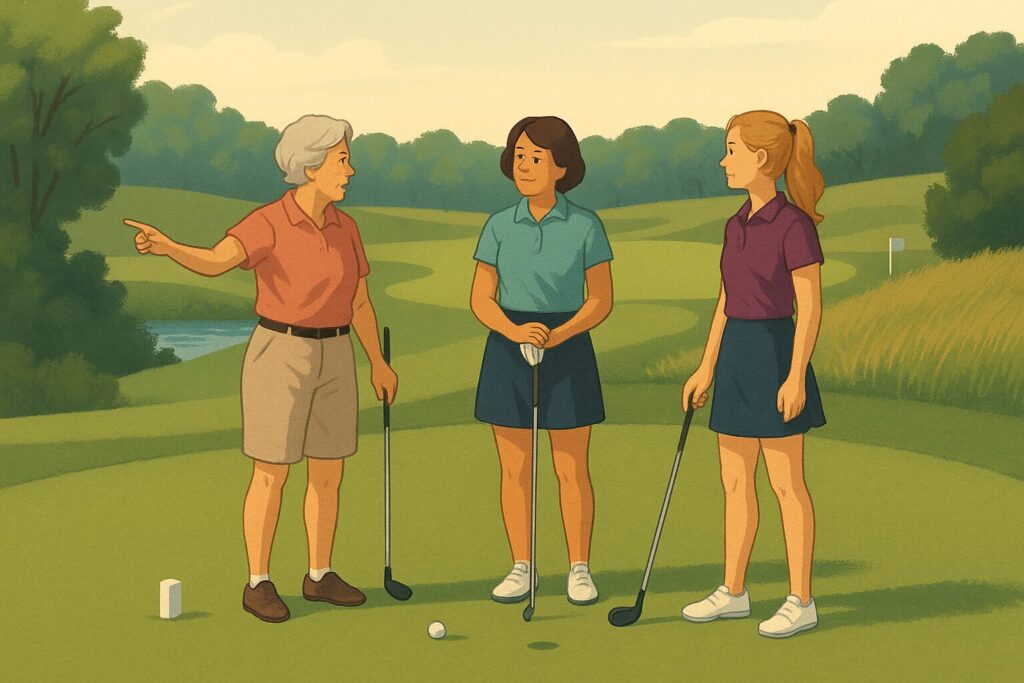
How I Track It:
- 18Birdies penalty tracker (water, OB, lost ball, unplayable)
- Weekly penalty review
- Cause → decision → outcome tracking
Improvement Targets:
🚫 PENALTY REDUCTION PROGRESS
├─ Starting Point: 4.2 per 9 holes (April)
├─ Current: 3.8 per 9 holes (June)
├─ Consistency Goal: ≤1 per round
└─ Breakthrough Goal: 0 per round
Turning Point:
I didn’t aim at every pin like I was Rory McIlroy — I just didn’t think of anything else to aim at. I wanted the ball in the hole, but I wasn’t planning the route. No intermediate target, no margin — just point and swing. Once I started aiming for spots in the fairway that gave me the best angle to the center of the green — and then actually aiming for the center of the green — my penalties dropped by 40%. Turns out, the journey is half the fun. Especially when it doesn’t involve a drop and a re-tee.
Why These Metrics Aren’t Perfect (But Still Work for Beginners)
Before we dive deeper, let’s be honest: the Core Four approach has limitations. Modern golf analytics has moved far beyond these traditional statistics, and for good reason.
What the Core Four Miss:
Fairways Hit doesn’t account for distance or recovery difficulty. Missing the fairway by 5 yards into light rough is very different from missing by 30 yards into trees. Mark Broadie’s research shows that “fairways hit” lacks the context that makes strokes gained analysis so powerful.
Greens in Regulation doesn’t measure proximity to the pin or shot difficulty. A GIR from 200 yards that lands 40 feet from the hole is statistically the same as a GIR from 100 yards that lands 8 feet away, but the scoring opportunity is completely different.
Putts per round can be misleading without distance context. As Broadie puts it: “A two-putt from 60 feet is excellent, but a two-putt from one foot is terrible.” Total putts don’t tell you if you’re lagging well or missing makeable opportunities.
Penalties are binary and don’t account for severity. A lost ball that costs you one stroke and 30 seconds is counted the same as an unplayable lie that forces a costly layup and ruins your rhythm.
Why Track Them Anyway?
For recreational golfers just starting to use data, these stats work because they’re:
- Simple to track in any golf app
- Immediately actionable (fewer penalties = lower scores)
- Psychologically manageable (4 numbers vs. 20+)
- Directionally correct (improving these will generally lower your scores)
The Modern Alternative:
Tour pros and serious amateurs use strokes gained analysis, which measures performance relative to the field from every position on the course. It’s more accurate, more nuanced, and officially adopted by the PGA Tour. Apps like Arccos, 18Birdies Premium, and Shot Scope now offer strokes gained tracking.
My Take:
I use the Core Four because I’m not trying to get to scratch—I’m trying to break 90 consistently. At my level, the action items from traditional stats (hit more fairways, avoid penalties, reduce 3-putts) are clear and achievable. Once I’m consistently shooting in the 80s, I’ll probably graduate to strokes gained analysis.
For now, imperfect data that I actually use beats perfect data that overwhelms me.
How I Use 18Birdies to Actually Get Better
18Birdies Setup That Actually Works
I use 18Birdies Premium, but honestly, you don’t need every feature it throws at you. When I first upgraded, I got overwhelmed by strokes gained charts, proximity maps, and sand save stats I barely had enough data to fill out. What actually helped? Hiding the noise and showing just the basics.

Here’s what I keep visible:
- Fairways hit %
- GIR %
- Penalty strokes
- Putts per hole
That’s it. No strokes gained. No scramble percentage. No advanced analytics. Just the stuff I actually review — because it tells me where I’m losing strokes and where I’ve made progress.
My Sunday Review System

Every Sunday morning, I sit down with coffee, open up 18Birdies, and pull up my rounds from the week. Leia usually settles in nearby to offer silent (but stern) judgment. I review my hole-by-hole summaries, check my shot tracker maps, and look at the core stats I care about: fairways, GIRs, penalties, and putts.
But that’s only half the process.
The other half happens in ChatGPT. I treat this like a combination coach, caddy, and golf therapy session. I’ll drop in my thoughts, questions, and voice notes after a round, and together we break it down — where the decisions worked, what patterns are showing up, what I can focus on next.
I don’t write everything down in a notebook. I write it in ChatGPT logs, then move the reflections into a Notion database. And I come back to it — when I’m planning practice, setting goals, or trying to figure out if my club choices actually matched the hole layout. It’s also a super quick way to review 18Birdies Premium lesson videos or ask ChatGPT to find YouTube breakdowns or drill options that match what I’m working on.
My Sunday review isn’t about assigning blame. It’s about spotting trends. If something jumps out — a penalty pattern, a wedge distance that needs dialing in, or a mental slip that cost me strokes — I name it. Then I pick one or two things to work on for the next week. Not too much, just enough to give me a focus. This week, for example, I’ve been feeling like I’m getting lazy with the turn in my backswing — so that’s where I’m focusing. One adjustment. One drill. One purpose.
That one thing sets the tone for my Tuesday range session, my Wednesday short game reps, and how I approach decisions in my next league round. It’s how I stay in the loop — not just tracking data, but actually using it.
Breaking 100 vs. Breaking 90: The Statistical Reality
Consistency Phase (Breaking 100 Reliably):
Based on Break X Golf data and my recent scores (115, 94, 87, 90), here are the targets that will get you consistently under 100:
🎯 CONSISTENCY PHASE TARGETS
├─ Fairways Hit: 40% (8+ per round)
├─ GIR: 15% (3+ per round)
├─ Penalties: ≤1 per round
└─ Putts: 33 per round (1.8 per hole)
Breakthrough Phase (Breaking 90 Consistently):
Once you’re reliably breaking 100, Shot Scope data shows these targets will get you consistently under 90:
🎯 BREAKTHROUGH PHASE TARGETS
├─ Fairways Hit: 42% (8+ per round)
├─ GIR: 23% (4+ per round)
├─ Penalties: 0 per round
└─ Putts: 32 per round (1.8 per hole)
My Stroke-Saving Progression Plan:
- PENALTIES: 3.8 → 1.0 → 0 = 5–7 strokes saved
- DOUBLES: 6.3 → 3.0 → 2.0 = 6–8 strokes saved
- GIR: 20.4% → 15% → 23% = 2–3 strokes saved
- PUTTS: 2.2 → 1.8 → 1.8 = 2–3 strokes saved
Social Proof:
Since implementing this system, my Monday league scores have dropped from averaging 58 to 52 per nine holes. My playing partners have started asking what I’m doing differently.
What I’m doing differently is trying to give myself the chance to do my best. If I know what I’m good at — and where I’m most likely to make mistakes — it’s easier to make smarter choices on the course. Not automatic, but informed.
Like on Hole 9 at Fellows Creek North: my second shot strategy changes depending on my tee shot. If I’m short and in the rough, I might lay up. If I’m in the fairway with a good angle, I might go for it. There’s no single “right” answer — but I feel more confident making that call when I understand what the next shot could be.
And it takes the pressure off a disappointing tee shot. I can stay mentally focused on the next one, instead of wasting energy lamenting the less-than-stellar positioning of the first.
Your Personal Action Plan
Week 1–2: Setup
- Install 18Birdies (or your golf statistics tracking app of choice)
- Play 3–5 rounds, log the four key statistics: fairways, GIR, penalties, and putts
- Don’t judge yet — I know, it’s hard. Especially since you’re now thinking about these stats.
Try not to pressure yourself, but also… it’s not a bad thing to start thinking about more fairways, more greens, fewer putts and penalties. Just paying attention might nudge your stats in the right direction. You’ll probably end up playing a little smarter just because it’s on your mind.
But — if you really want a pure baseline, with maximum room to improve? Try to track it without letting it influence your choices. No thoughts, just vibes. Stat vibes.
Week 3–4: Analyze & Adjust
- Use your Sunday review (or Monday, or whenever‑you‑have‑15‑minutes review)
- Spot your weakest stat — the one doing the most damage
- Build your practice around that one thing
- 3–4 focused sessions a week — short is fine, focused is better
This part is all about removing chaos and adding purpose. You’re not trying to fix your whole game. Just one leak in the boat at a time.
And remember — not every stat needs fixing. You might be a stellar putter, and not have much room to shave strokes there. But maybe your fairways are the pain point, costing you a stroke or two just getting to the green on every hole. That’s the kind of clarity that makes your practice actually useful — not just busywork with a 7‑iron.
If you’re still skeptical, you’re not alone — most golfers can improve, but many don’t because they don’t have a system built around what actually matters. Research shows that targeting core scoring stats like GIR, penalties, and putting is the fastest path to lower scores. You don’t need to be perfect. You just need to know where your biggest leaks are.
Month 1–3: Consistency Phase (Breaking 100 Reliably)
This is where things start to click. You’re not just trying to survive each hole — you’re actually starting to play golf. You know which club to reach for, you’re making better decisions, and your bad shots aren’t quite as bad. Not every round is magical, but they’re way less chaotic.
🎯 CONSISTENCY PHASE TARGETS
├─ Fairways Hit: 40% (8+ per round)
├─ GIR: 15% (3+ per round)
├─ Penalties: ≤1 per round
└─ Putts: 33 per round (1.8 per hole)
You might still chunk a wedge. You might still flub a tee shot. But you’re not spiraling after. You’re starting to know what went wrong and what to do next. That’s real progress.
Month 4–6: Breakthrough Phase (Breaking 90 Consistently)
This is where the rounds start to feel different. You walk up to the first tee knowing you’ve got a plan. You recover from mistakes faster. You manage your misses. You’re not just hoping for a good round — you’re building one, shot by shot.
🎯 BREAKTHROUGH PHASE TARGETS
├─ Fairways Hit: 42% (8+ per round)
├─ GIR: 23% (4+ per round)
├─ Penalties: 0 per round
└─ Putts: 32 per round (1.8 per hole)
You’re not perfect. But you’re steady. You’re getting off the tee clean, you’re landing on the green more often, and you’re giving yourself tap-ins instead of 10-foot testers. Even when the score doesn’t quite break 90, you can feel how close it is — because you’re not guessing anymore.
Reality Check: This Is More Feasible Than You Think
Let’s be honest — most golfers don’t improve because they don’t have a plan. They’re chasing swing tips on Instagram, swapping drivers every season, or hoping a new grip will fix their slice. But the golfers who do improve? They’re the ones who put in a little structured work — the ones who know what to focus on, and why.
This isn’t about overhauling your swing. It’s not about spending $2,000 on new clubs or signing up for a 12-week bootcamp. It’s about tracking a few key stats and using them to make smarter choices — on the course and during practice. That’s it.
And no, it doesn’t take a full-time golf obsession to make this work. I happen to be in my golf obsession era right now: 9-hole league rounds on Monday, 9-hole league rounds on Thursdays (18 when I can swing it), group clinics when I can grab a spot, weekend practice rounds, and afternoons at Leia Links or the range. It’s a lot. But that’s just because I really like golf.
The truth is, I’d still be seeing meaningful improvement with half that time — if I was practicing with purpose. You don’t need to be all-in. You just need to be intentional.
And honestly? A lot of my time on the course isn’t focused, intentional practice. It’s Titleist treasure hunting in out-of-bounds areas. It’s wildlife photography. At the range, I sometimes play Angry Birds or whatever animated kid game is available on the launch monitor. My actual time spent on focused, structured practice? Maybe two hours a week. My actual number of serious golf holes per week? Eighteen.
And that’s been enough to change my game.
Final Thoughts: Clarity Over Complexity
You’re not a tour pro. You’re a determined golfer with a short season and a big goal.
Track what matters. Practice with purpose. Celebrate every half-stroke win.
The four key stats — fairways, GIR, penalties, putts — interconnect perfectly. Hit more fairways, get easier approaches, hit more greens, need fewer putts. Avoid penalties, eliminate doubles, create scoring opportunities. My goal of breaking 100 consistently and reaching the breakthrough phase isn’t a longshot — it’s a plan. A system. A loop that’s working.
And here’s the best part: golf is more fun now. I’m not guessing anymore. I’m not spiraling. I’m seeing progress, and that makes the whole thing feel more playful — more satisfying — even when the shots aren’t perfect. Especially when they aren’t.
I didn’t buy a new swing. I built a better system.
You can too.

